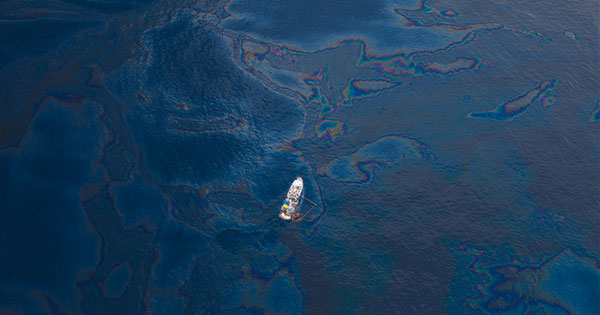
Under the impression that New Orleans is a coastal city, visitors sometimes ask if there’s some place they can walk to see the Gulf of Mexico. I let them know we’re actually about 75 miles from the mouth of the Mississippi River. In between are some fishing towns and vast marshes and watery cypress forests and pothole-like lakes.
And yet, the Gulf is getting closer every day. The wetlands are steadily eroding and being subsumed by rising water; by the time kids born today graduate from college and get jobs, there’s a chance the Gulf will be lapping at the city’s levees. Louisiana has lost more than a million acres of coastland since the 1930s, and looks on track to lose a million more.
This is arguably the largest, slowest, manmade disaster in human history. It takes real enterprise to erase a million acres. Three hundred years of building levees to contain the river starved the marshes of floodwaters and silt. Global warming caused the Gulf to rise. And rampant oil and gas exploration carved out a chessboard of canals for drilling and navigation, which has led to saltwater intrusion destroying freshwater marshes.
The swamps and marshes that buffer New Orleans from coastal storms, especially hurricanes, have been described as the city’s equivalent of elevation. Having all that cypress swamp and grassland between us and the Gulf slows hurricane winds and diminishes storm surge. But as the marshes disappear, the city, already sinking due to the compression of the silt on which it’s built, is effectively lowered even more.
Fixing the problem is not all that difficult, technically speaking. A whole series of projects, including diverting river silt to certain areas and rebuilding barrier islands in others, were outlined in a comprehensive 2012 master plan, already updated for 2017.
But financially it’s more than a little daunting—the estimated cost is about $50 billion over the next 50 years—and thus pretty implausible politically. The possible sources of that kind of money you can count on three fingers.
“If you’re not going to get money from the feds, and you’re not going to get money from the state, and you’re not going to get money from the industry,” said John Barry over a recent lunch in the Marigny before trailing off. “Well, I don’t think you’re going to find it next time there’s a rainbow.”
Barry is the city’s most visible—if most unlikely—crusader. The 67-year-old historian is author of many books, including “Rising Tide,” a remarkable account of the traumatic 1927 Mississippi River flood and the politics behind it. He became an activist when he was appointed to the Southeast Louisiana Flood Protection Authority-East, which is essentially a consultancy to other state agencies. The board surprised many in Louisiana when it filed suit against nearly 100 oil and gas companies for the damage they’ve caused, and which by law they were supposed to fix.
Backlash was expected. The speed and severity with which it came was not. Governor Bobby Jindal put the lawsuit and those who brought it square in his crosshairs, ensuring that Barry (and others supporting the suit) weren’t reappointed when their terms expired. Jindal and others pressured the legislature to craft legislation (later ruled unconstitutional) that made the lawsuit illegal retroactively, then applauded loudly when a federal judge threw the lawsuit out last February.
It’s not dead yet. An appeal is percolating through the Fifth Circuit, and a decision is expected by the end of this year. And if that fails, class action lawsuits are likely to bubble up.
Meantime, the slow-motion battle has been moving to the parish level. When low-lying and fast-eroding Plaquemines Parish, which lies just downriver from New Orleans, launched its own lawsuit in 2013, the oil and gas industry began pushing parish officials to back off as well. A recent parish council election, normally a sleepy affair, became heated. Lawn signs sprouted reading, “Stop the lawsuit or kill the parish.” The outspoken parish president, Billy Nungesser, who had signed off on the lawsuit, started backpedaling in advance of a run for a state office.
Taxpayers from outside the state don’t seem too keen on ponying up big money to fix the Louisiana coast. And the Obama administration is unlikely to make a concerted effort to help a state that’s gone full bore to protect the oil and gas companies from legal liability.
Those companies, in turn, are figuring that the taxpayers will eventually foot the bill to repair the damage they created. “Oil companies are being sued not because they have the money, but because they broke the law,” Barry told me. “Their defense is, ‘The cops didn’t make us stop.’”
What’s been most striking to me has been the utter lack of urgency. I noticed an upsurge in interest among friends and acquaintances following an excellent three-part series in the Times-Picayune entitled “Last Chance.” The takeaway: though New Orleans may not get fully inundated for several decades, it has only one decade to act, after which the continuing erosion would end up costing far beyond the current $50 billion estimate.
That series ran in 2007. If the premise was correct, that means in two years, this quiet battle is over. And the Gulf, assuredly, will come to us.


